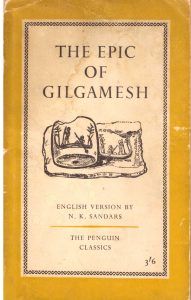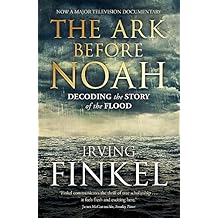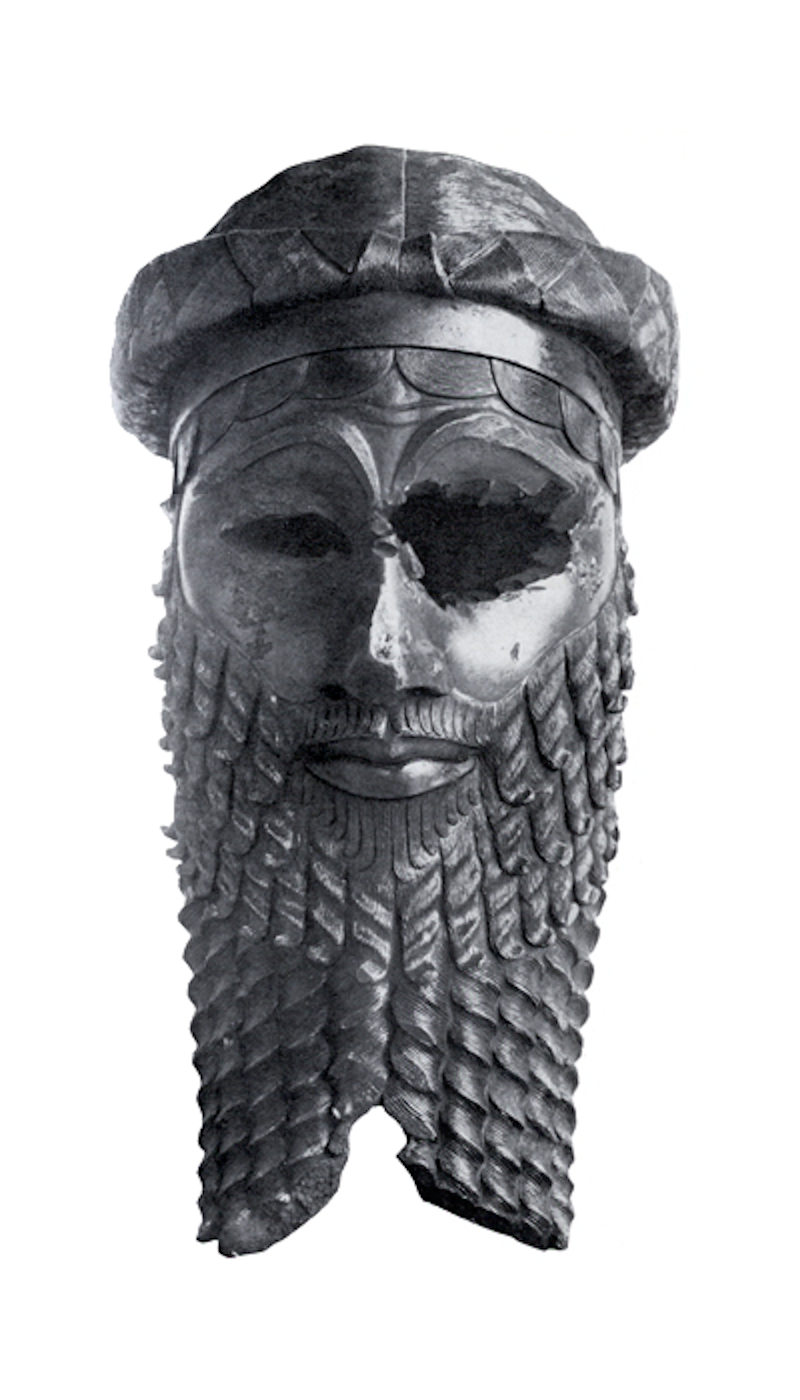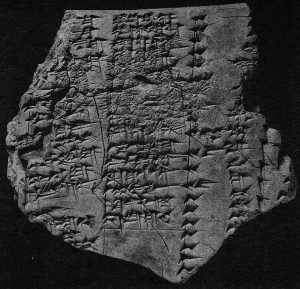by Paul Braterman
 By chance, I chose as holiday reading (awaiting my attention since student days) The Epic of Gilgamesh, a Penguin Classics bestseller, part of the great library of Ashur-bani-pal that was buried in the wreckage of Nineveh when that city was sacked by the Babylonians and their allies in 612 BCE. Gilgamesh is a surprisingly modern hero. As King, he accomplishes mighty deeds, including gaining access to the timber required for his building plans by overcoming the guardian of the forest. But this victory comes at a cost; his beloved friend Enkidu opens by hand the gate to the forest when he should have smashed his way in with his axe. This seemingly minor lapse, like Moses’ minor lapse in striking the rock when he should have spoken to it, proves fatal. Enkidu dies, and Gilgamesh, unable to accept this fact, sets out in search of the secret of immortality, only to learn that there is no such thing. He does bring back from his journey a youth-restoring herb, but at the last moment even this is stolen from him by a snake when he turns aside to bathe. In due course, he dies, mourned by his subjects and surrounded by a grieving family, but despite his many successes, what remains with us is his deep disappointment. He has not managed to accomplish what he set out to do.
By chance, I chose as holiday reading (awaiting my attention since student days) The Epic of Gilgamesh, a Penguin Classics bestseller, part of the great library of Ashur-bani-pal that was buried in the wreckage of Nineveh when that city was sacked by the Babylonians and their allies in 612 BCE. Gilgamesh is a surprisingly modern hero. As King, he accomplishes mighty deeds, including gaining access to the timber required for his building plans by overcoming the guardian of the forest. But this victory comes at a cost; his beloved friend Enkidu opens by hand the gate to the forest when he should have smashed his way in with his axe. This seemingly minor lapse, like Moses’ minor lapse in striking the rock when he should have spoken to it, proves fatal. Enkidu dies, and Gilgamesh, unable to accept this fact, sets out in search of the secret of immortality, only to learn that there is no such thing. He does bring back from his journey a youth-restoring herb, but at the last moment even this is stolen from him by a snake when he turns aside to bathe. In due course, he dies, mourned by his subjects and surrounded by a grieving family, but despite his many successes, what remains with us is his deep disappointment. He has not managed to accomplish what he set out to do.
 On his journey, Gilgamesh meets the one man who has achieved immortality, Utnapishtim, survivor of a flood remarkably similar, even in its details, to the Flood in the Bible. Reading of this sent me back to Genesis, and hence to two other books, The Bible [actually, just the Pentateuch] with Sources Revealed, by Friedman, and The Ark Before Noah, by Finkel. Friedman is Ann and Jay Davis Professor of Jewish Studies at the University of Georgia, while Finkel is curator of the British Museum’s collection of cuneiform tablets. Most of what follows derives from these two sources.
On his journey, Gilgamesh meets the one man who has achieved immortality, Utnapishtim, survivor of a flood remarkably similar, even in its details, to the Flood in the Bible. Reading of this sent me back to Genesis, and hence to two other books, The Bible [actually, just the Pentateuch] with Sources Revealed, by Friedman, and The Ark Before Noah, by Finkel. Friedman is Ann and Jay Davis Professor of Jewish Studies at the University of Georgia, while Finkel is curator of the British Museum’s collection of cuneiform tablets. Most of what follows derives from these two sources.
 Comparing Hebrew with Cuneiform may seem like a suitable gentlemanly occupation for students of ancient literature, but of no practical importance. On the contrary, I maintain that what emerges is of major contemporary relevance.
Comparing Hebrew with Cuneiform may seem like a suitable gentlemanly occupation for students of ancient literature, but of no practical importance. On the contrary, I maintain that what emerges is of major contemporary relevance.
As Lakatos pointed out, scientists will not abandon a position, despite difficulties, absurdities, and anomalies, until a more satisfactory one is offered. Why should the creationist be any different? He is led to embrace the absurdities of Young Earth “Flood Geology” because he regards the text of Genesis as the direct revealed word of God. If you want to change his mind, you must offer an alternative that is better on his terms, emotionally and spiritually. Such an alternative, I argue, is what emerges from textual and historical analysis. And in the Americas both North and South today, weaning the Evangelical voting bloc away from reality-denying simplicities is a matter of the greatest urgency.

However inspired the writers of Genesis may have been, they were of necessity people of their own times, expressing themselves within their own cultural context. This is hardly a novel observation. It goes back at least to the time of Maimonides.
And what a context! The Old Testament text itself refers to many books that are now lost to us. The biblical Flood narrative, as we shall see, shows signs of being formed from the welding together of two separate accounts written from different viewpoints, while its literary antecedents, and the antecedents of numerous other biblical passages, go back long before the date that tradition ascribes to Moses.

You are probably familiar with the rather unconvincing story of Moses in the bulrushes, and may have wondered where on earth it came from. Here’s your answer. It is a direct echo of the story of Sargon of Akkad (2270 – 2215 BCE). Sargon’s mother, he tells us, was a priestess, and therefore had no business having children. So she made him a reed basket sealed with bitumen, and placed him in the river, from which he was rescued by a farmer drawing water.
Consider also the Code of Hammurabi, around 1754 BCE. This code, and many subsequent cuneiform tablets, resemble in their “If a man…” format the codes of Exodus and Deuteronomy, including the notorious “an eye for an eye”, which the Jews by rabbinical times had reinterpreted as a right to financial compensation for injury. Or compare the enormously long lives of the pre-Flood rulers in the Sumerian King List (2000 BCE) with those of the pre-Flood patriarchs in Genesis.

The Flood story itself exists in numerous versions, the oldest ones known to us being the Sumerian Flood of Ziusudra and the Old Babylonian (Akkadian) of Atrahasis, from around 1600 BCE, although the story may by then already have been ancient. We should also remember that our cuneiform libraries are sadly incomplete, and in several key texts the ending is missing. Even so, the resemblance is clear, and sometimes extends to specific details. On one Old Babylonian tablet, the god who warns Atrahasis says that he will send him the animals to wait at his door to be rescued. Compare Genesis 6:20, where two of every sort will come of their own accord to Noah, thus answering the question of how he would have been able to round them all up. The same tablet even uses the expression “two by two”, as in Genesis 7:9, as does the “Ark tablet” that was Finkel’s leading inspiration.
Closest to the biblical account among the surviving materials is the story of Utnapishtim, already alluded to. This includes the central figure acting on orders from a god, taking samples of all living things into the Ark, sealing it watertight with pitch (which is abundant in Mesopotamia), sending birds out of the Ark to test for dry land when, after the flood, it runs aground, and offering up sacrifice on emergence. In Genesis, famously, we have God pointing to the rainbow as a sign that He will never again bring on a universal flood. In what I regard as a parallel passage in Gilgamesh, Ishtar displays her bejewelled necklace and says that she will never forget this time. There is a final element in Gilgamesh that is completely absent in Genesis. Enlil, who was primarily responsible for the Flood, is persuaded by the other gods that he has rather overdone it, goes down into the Ark, takes Utnapishtim and his wife by the hand, and grants them eternal life. (In Genesis, you may recall, Noah goes and gets drunk.)

One dramatic difference between the Genesis story and its Mesopotamian precursors is the length of the Flood; a year, rather than a few days. Another is the shape and composition of the Ark, which changes from a round coracle woven from reeds in Atrahasis to square planking in Gilgamesh to a giant gopher wood longboat in Genesis, although one feature (the use of pitch for waterproofing) remains constant throughout. Then there is the reason for the Flood. In Gilgamesh, none is given, but in other versions we are told that the gods, and especially the ill-tempered and arbitrary Enlil, think that humankind is making too much noise for their comfort.1 The gods are, among other things, personifications of natural forces, and Enlil as sky god is responsible for storms. In Genesis, humankind is destroyed, by the God who created them, because they deserve it. We can debate the relative merits and degree of realism of these two approaches.

From very early times, the Israelites would presumably have been familiar with the dominant literature of their powerful neighbours to the East. If not, they would certainly have come into contact with it during the Babylonian Exile. The Book of Daniel tells us (and why should we not believe it?) that selected Judaean youth were given three-year courses in Babylonian language and literature, during which provision was made for their food and wine. A university education, complete with maintenance grant! And we know from the recovered debris of Babylonian schoolrooms that the King List, Sargon, and Gilgamesh were part of the curriculum.
Other interesting things were happening in Babylon around this time. One remarkable tablet seems to describe all the other gods as attributes of Marduk, the god particularly associated with Babylon. So we are told that Urush is Marduk of planting, Nergal is Marduk of battle, Nabu is Marduk of accountancy, and so on through a total of 14 equivalences. If Marduk-worship really was moving in the direction of monotheism, this might help explain the puzzling fact that the Jewish hero of the book of Esther is called Mordechai.
The Flood story may have entered what was to become the Jewish tradition more than once, and from subtly varying sources. The Genesis account gives the strong impression of being the fusion of two slightly inconsistent narratives, in one of which the deity is referred to as God, while in the other he is referred to as YHWH.2 The former has Noah taking one pair of each kind into the Ark, while the latter has him take in seven pairs of clean animals, presumably in order to have some available for sacrificing, or perhaps to restore agriculture after the Flood. The degree of distinctiveness of these two narratives, and their dates of composition, remain fertile areas for study and debate.
Thus, placed in context, the Flood story fits into a picture of intellectual and spiritual ferment as people, and peoples, develop their descriptions of the Deity. By contrast, the doctrine of verbal infallibility offers nothing but a single sterile rootless revelation. Genesis deserves better.
1] Sandars interpolated this reason from the Atrahasis Flood story into her translation of Gilgamesh; see her introduction for details.
2] Some readers will recognise these as P and J respectively, two of the four sources proposed in the Documentary Hypothesis, for which Friedman lays out the evidence in the work already mentioned and, at greater length, in Who Wrote the Bible? For a powerfully dissenting view, however, see Rendsburg, “The Biblical Flood story in the light of the Gilgamesh Flood account,” in Gilgamesh and the world of Assyria, Azize, J & Weeks, N., Peeters, 2007, p. 117, open access here (Publication 119), and How the Bible Is Written (scheduled for 2019).
I thank Professor Gary Rendsburg for helpful correspondence and access to unpublished material.
